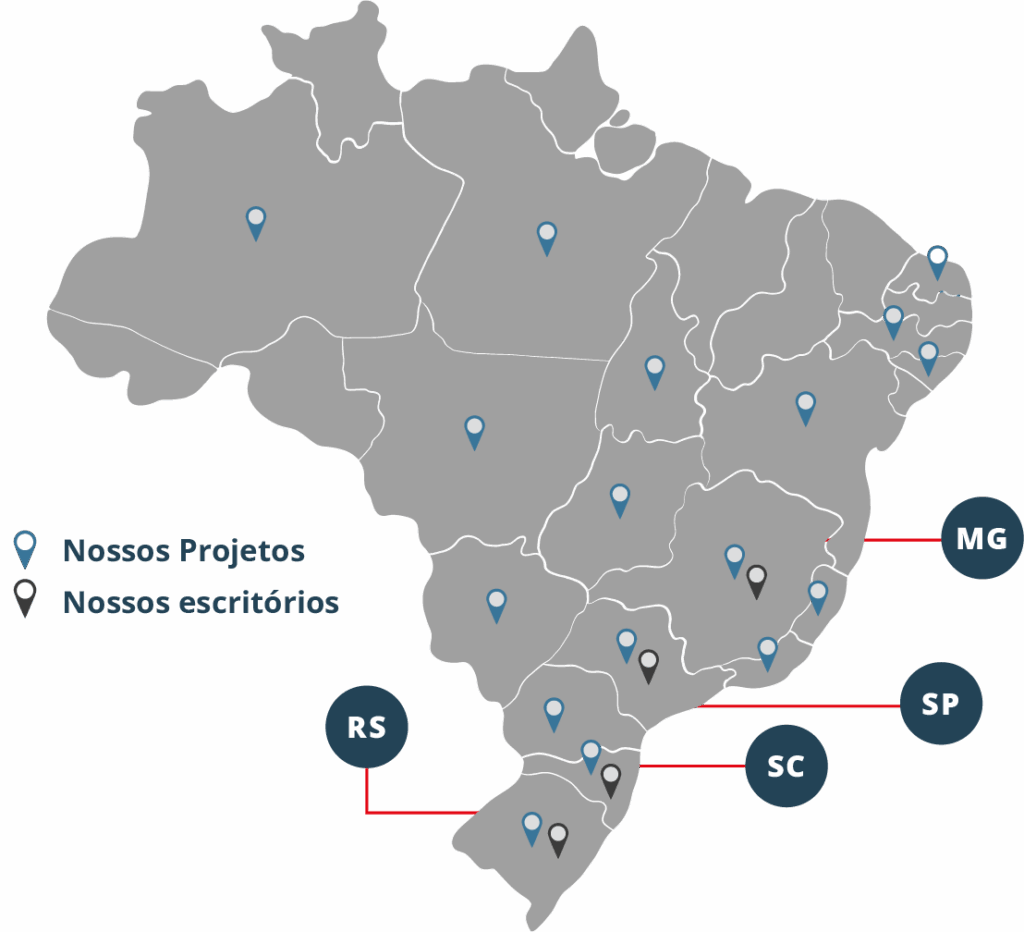My name is Bruna Moschen Portz, I’m an Architect and Urban Planner, and I’ve been working on the Coordination team at IBR for 9 months. I’m here to talk about platforms used for coordinating BIM projects. Simply put, coordination can be defined as the integration of a building’s disciplines, reducing (or even eliminating) clashes between projects—thus avoiding rework and unnecessary construction costs.
The construction industry in Brazil is undergoing a transformation with the increasing adoption of BIM. This concept is essentially a set of information, generated and maintained through a virtual model, about a building and its life cycle. As such, coordination becomes a key element, as the projects are more complete, containing all necessary information in a single model, with plans, sections, and 3D visualization. With the ability to view everything in one model, it becomes easier to detect clashes between disciplines, solving them before construction starts, and assisting with building maintenance over time.
This information-rich model can be developed using different software programs. At IBR, for example, we mainly use Revit for design and Navisworks to assist with coordination. In addition, we also use a tool called BCFier, which enables the generation of reports with images that identify conflicts and propose resolutions, which are then sent to the responsible designers. Although the reports are very informative, clear communication among all project stakeholders is essential to resolving conflicts and more complex issues effectively.
Another tool used for coordination is an online platform—a more complete solution where everyone involved can access the project to view notes and make changes in real time, without needing to download programs or exchange PDFs via email. This platform allows users to see the project history, 3D models, usage reports, and notes—making project visualization much easier.
There are many online platforms currently available, all with the same goal: to bring all information together in one place. However, they differ in the features they offer and in their layouts. During research for implementation at IBR, several platforms were evaluated based on the company’s needs. Below are some of them, along with a comparison table to highlight their similarities and differences.
We begin with BimCollab, currently the most complete platform on the market. Developed in the Netherlands, it’s widely used for project coordination. It offers several features to support project execution and understanding of the notes, such as:
- Revit plugin, streamlining coordination tasks;
- Filters by discipline, zone, and priority;
- Notifications for those involved with the issue;
- Deadline tracking for resolving clashes;
- Integration with BCFier, allowing import of prior notes;
- Overview of all issues (new, pending, in progress, unresolved, and resolved);
- Report and chart generation.
Additionally, BimCollab provides online 3D access for better visualization of the model. A downside is that the platform doesn’t support Portuguese, which may be a barrier for users unfamiliar with other available languages.
BimSync, developed in Norway, is quite similar to BimCollab, but lacks some features such as the Revit plugin, clash notifications, and has fewer filters. A notable difference is its ability to add notes directly on the online 3D model, simplifying and speeding up clash detection. It also supports the Portuguese language.
QiCloud, developed in Brazil, is very similar to BimCollab. However, it does not generate charts or reports and lacks a Revit plugin.
Other platforms like BimTrack (Canada) and Construflow (Brazil) are also similar to BimCollab, differing mainly in interface design and pricing. Construflow supports Portuguese but does not integrate with BCFier.
Below is a comparison table showing the key features considered essential for project coordination and information management.
The goal of this article was to clarify the concept of project coordination and present some of the tools and platforms used in the field. It’s worth noting that the platform comparisons are purely informational—there is no preference or endorsement. The platform you choose should match your company’s needs and serve as a facilitator in managing project data and coordination. I hope this information was helpful, and I’m available for any questions.


